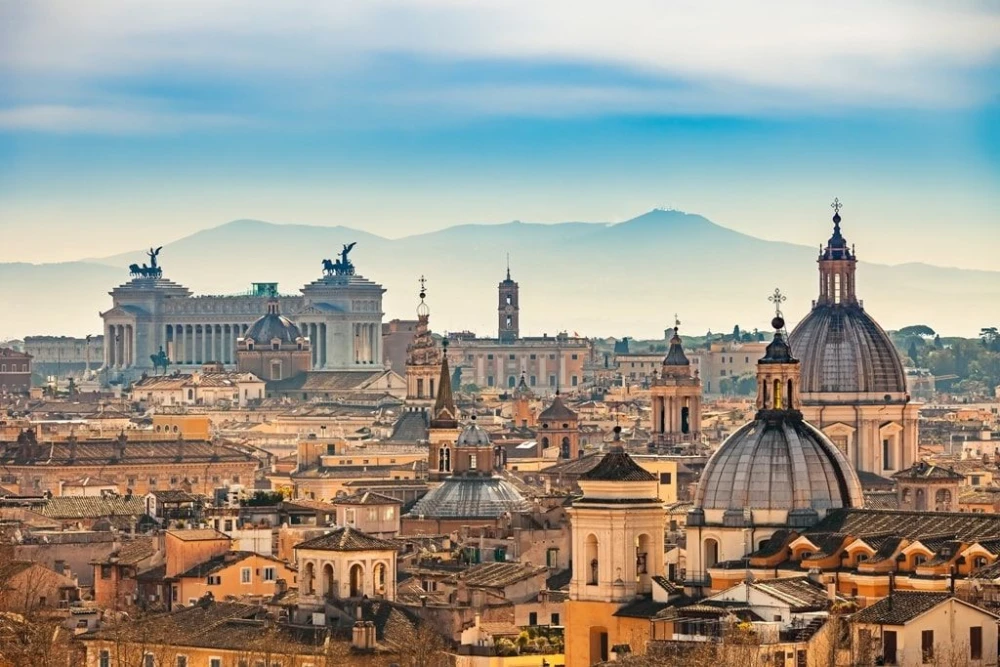15124, Maroysi, Athens, Greece
Civitavecchia (Rome), La Spezia, Barcelona, Cartagena-, Lisbon, Ponta Delgada, Cape liberty


Our gateway to the Eternal City, Civitavecchia has served as Rome's seaport since the 13th century, boasting a long and venerable history. Its location near the modern city, made it a perfect vacation resort for emperor Trajan, who built a pleasure villa. while Bernini and Michelangelo designed the harbor fortifications. Yet the Eternal City, the ancient capital of the Western World and the center of Christianity for nearly 2.000 years, is our main reason to be here. YYou can visit the ruins of the Forum and the Colosseum, throw a coin in Fontana di Trevi to make sure you return to Rome one day, take a photo in front of the Vatican, view the splendors of the Sistine Chapel or climb the Spanish Steps, once the heart of Rome's Bohemian Quarter and enjoy a delicious gelato, in the glamorous area.

La Spezia is a city of Liguria in northern Italy. Located at the top of the Gulf of La Spezia, it is an important commercial port and base of the Italian Navy. It is also the getway to Florence and Piza

Barcelona is one of the world's greatest treasures, a global capital of commerce, fashion, culture and sunshine. Cruise visitors should start with a walk down Las Ramblas, the glorious tree-shaded thoroughfare at the heart of the city, enjoy a dive in the wonderful beaches nearby, but, most of all, see what visionary architect Antoni Gaudi wrought. Seven of his creations have been honored as UNESCO World Heritage Sites, including La Sagrada Familia, the Park Guell and Casa Mila. Time provided, you can also visit the former Olympic Ring on the hill of Montjuic, home to world-class parks, fountains and museums. Barcelona, which nurtured such artistic giants as Picasso, Dali, Miro and Casals, is definitely a traveler's paradise.
Cartagena is major naval station located in south-eastern Spain, in the autonomus Region of Murcia. Since its foundation in 229 B.C, it has been inhabited by several cultures which have left their mark on its artistic heritage as one of the most important defensive ports in the country. The highlights of the city include the Muralla del Mar ('Sea Wall'), built by Charles III (18th century), the Old Cathedral located on the Camino del Parque Torres (behind the Muralla del Mar wall), the recently restored Roman Theatre (among its numerous other Roman remains, built between the 5th and 1st centuries BC), the National Museum of Underwater Archaeology ARQUA (at Paseo Alfonso XII, 22), the Town Hall, a gem of modernist architecture dating from the early 20th century and a number of modernist buildings made for its military fortifications. The best way to learn more about the Modernist architecture of Cartagena is to take a walk along the Calle Mayor, which leads off the Plaza del Ayuntamiento square. Here visitors will find the houses of Cervantes and Llagostera, by the Cartagena architect Victor Beltrí. Time given, don't miss Concepción Castle, built on one of the five hills of the old Carthagena and today home of the Centre for the Interpretation of Cartagena's History.
Lisbon, the capital of Portugal, on the southwest of the country, has been the main gateway for the rest of the planet for more than 19 centuries. Ships captained by Portuguese explorers like Bartolomeu Dias, Vasco da Gama and Ferdinand Magellan, skittered across the globe, hauling treasure home and making Lisbon a global capital. Draped across seven hills, Lisbon was once the center of a vast maritime empire that stretched from the west coast of Africa to the Spice Islands of the East Indies, until 1755, when a violent earthquake destroyed two-thirds of the city, leaving intact only the Alfama, the old Moorish quarter. Today, Lisbon is a stately city of Neoclassical buildings and wide plazas. Eternally linked to the sea, Lisbon's magnificent harbor is spanned by the longest suspension bridge in Europe. Among the city's landmarks are the iconic Castelo de São Jorge, the World Heritage Sites of Belém Tower and Jerónimos Monastery, both built in Lisbon's native Manueline architectural style.
Ponta Delgada is the largest municipality and administrative capital of the Autonomous Region of the Azores in Portugal, lying around a natural bay on São Miguel Island, the largest and most populous in the archipelago. Identified by its three arches known as the Portas da Cidade, it stands out for the large number of churches and other buildings, among which the baroque São Sebastião Church and the Todos os Santos Church. White-washed houses and buildings, 17th and 18th Century convents and churches decorate its rolling hills. Cobbled streets and small squares are found around the centre, where there is also a large boulevard, which is perfect for evening seaside walks. Visit Museu Carlos Machado (Carlos Machado Museum), the beautiful Praça 5 de Outubro (5th of October Square) which is dominated by a marvellous Renaissance Fortress, the Fortaleza de São Brás, the most romantic garden and most lush area in the city, Jardim António Borges (António Borges Gardens) or tour to the natural wonders of the island, such as the Lagoa das Sete Cidades (Seven Cities Lake), which is formed by two large lakes that fill the massive crater of a dormant volcano. From the Pico do Carvão one can enjoy fabulous panoramic views over the Lagoa das Sete Cidades.
Itinerary







